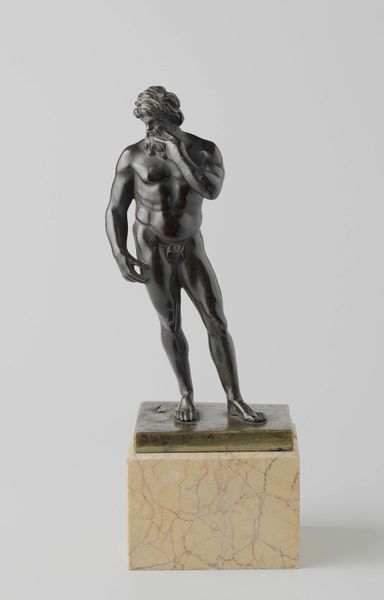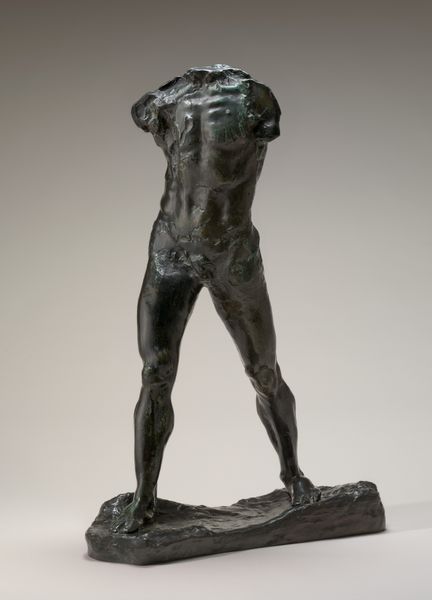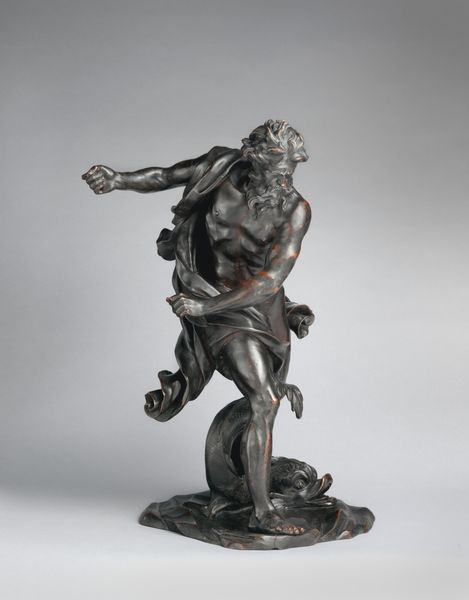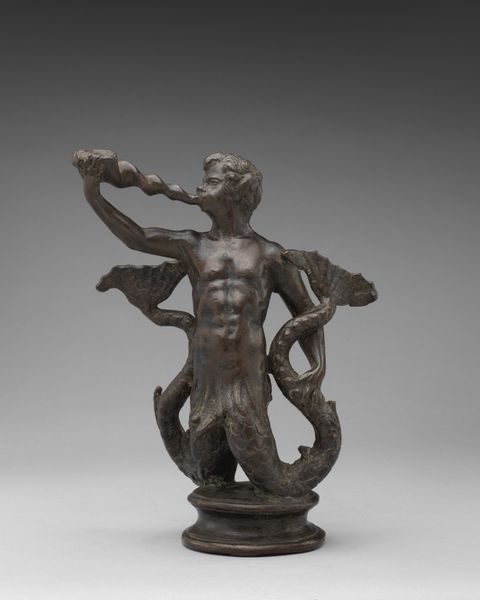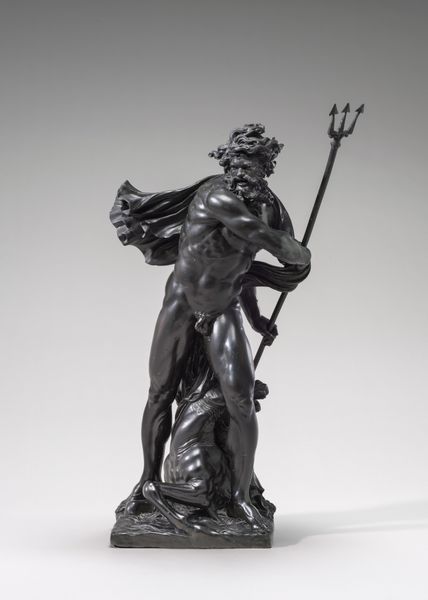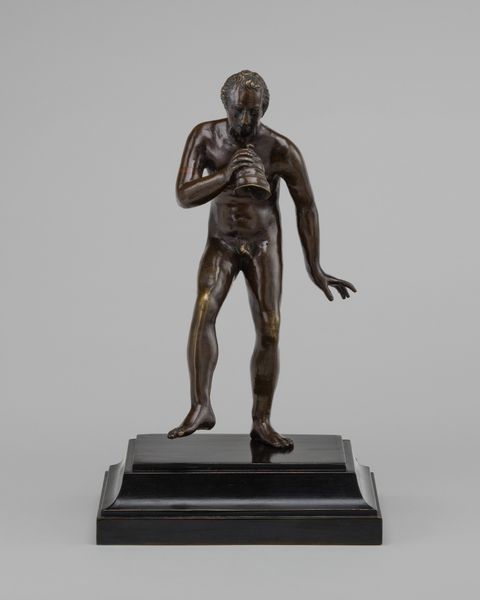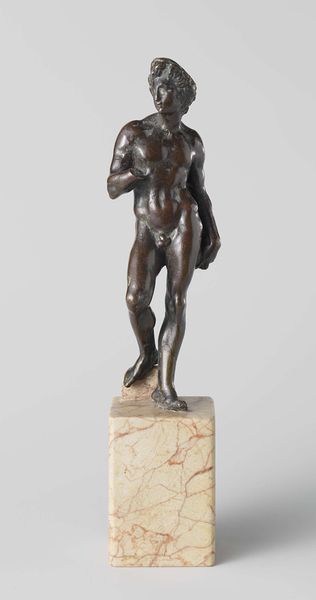
bronze, sculpture
#
sculpture
#
bronze
#
figuration
#
sculpture
#
history-painting
#
academic-art
#
nude
Copyright: Public Domain
Curator: This bronze sculpture, entitled "Cacus in Hell", dates from around the 19th century. What are your initial thoughts? Editor: It has an interesting contrast of textures—the smoothness of the figure's skin against the rough, organic shape of the tree stump. There is a strong diagonal dynamic. I wonder what the sculptor was trying to convey with the asymmetry. Curator: The work depicts Cacus, a monstrous figure from Roman mythology known for stealing cattle from Hercules. The serpent coiled around him, and his placement near a tree stump—likely symbolizing a destroyed lair—serve to tell us of Cacus' demise after Hercules caught up to him. Considering the historical context, this piece serves as a potent allegorical depiction of divine justice. Editor: The anatomical precision is remarkable. The musculature is rendered with a classical eye, evoking the academic art tradition. The sculptor uses light and shadow very well; they must have had extensive knowledge of bronze casting to achieve this level of control. I'd like to ask what function this work served in 19th-century art circles. Was it exhibited, or displayed indoors? Curator: These sculptures served several purposes: decorative display, academic study, and demonstrations of wealth and refined taste among collectors. Cacus represents a convergence of several themes prevalent in that time period—interest in mythology, historical narratives, the aestheticization of violence, and expressions of morality that promoted then contemporary ideas about good versus evil. It is also hard to miss the tension present in the piece--this speaks to an internal struggle made external on Cacus’s skin. Editor: Indeed. Even in the figure's gaze, there is something of defiance rather than abject defeat. Did academic art’s preoccupation with moralizing tales help enforce classist distinctions among art enthusiasts? Curator: Undoubtedly. Narratives that reinforced dominant ideologies found favor in establishment circles; reinforcing social norms around hierarchy and behavior. Editor: Interesting! Overall, this sculpture is not merely a technical exercise but an ideological document made material. Curator: Exactly! By looking at art in this manner, we understand that there is more at stake than aesthetic appreciation alone.
Comments
No comments
Be the first to comment and join the conversation on the ultimate creative platform.
